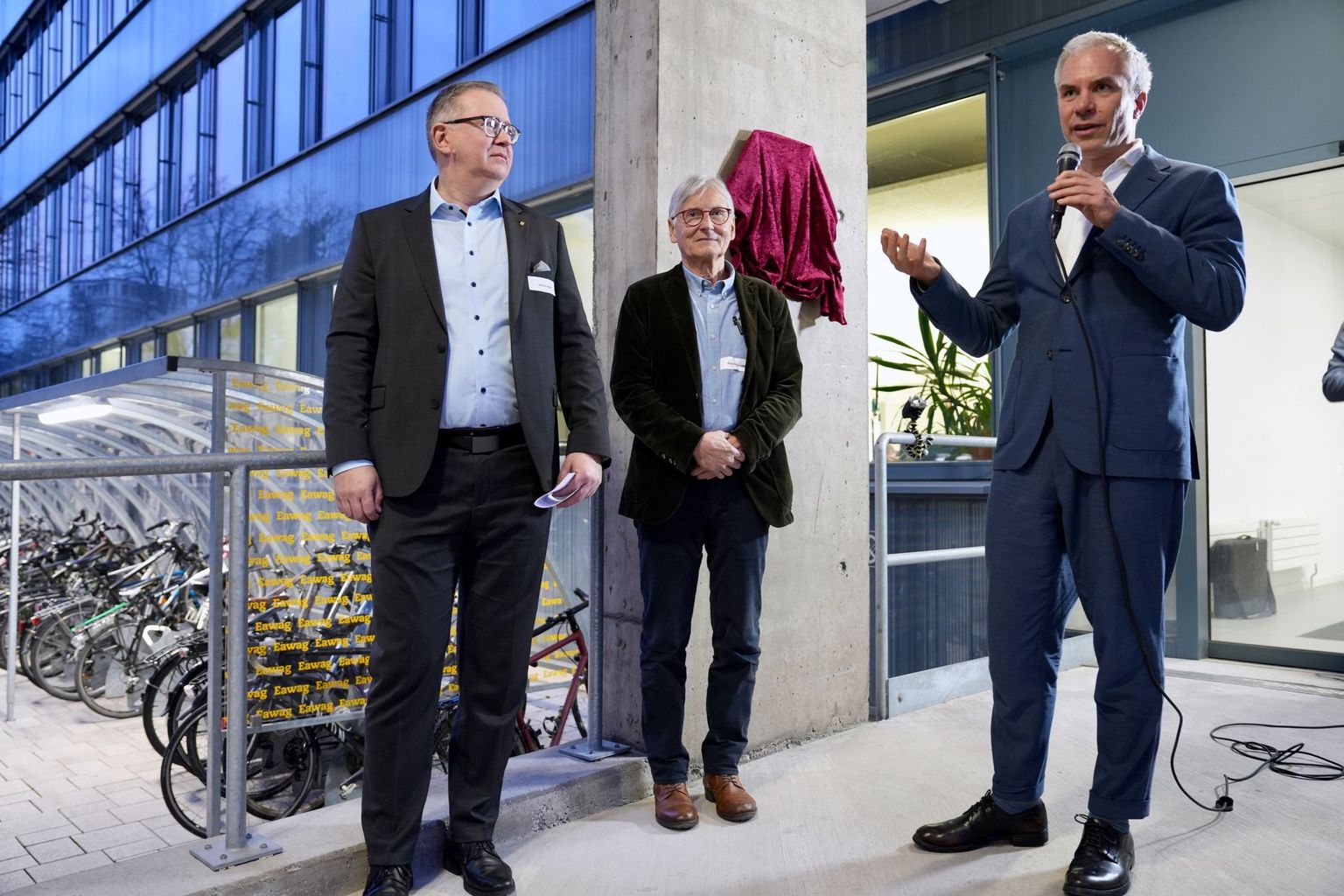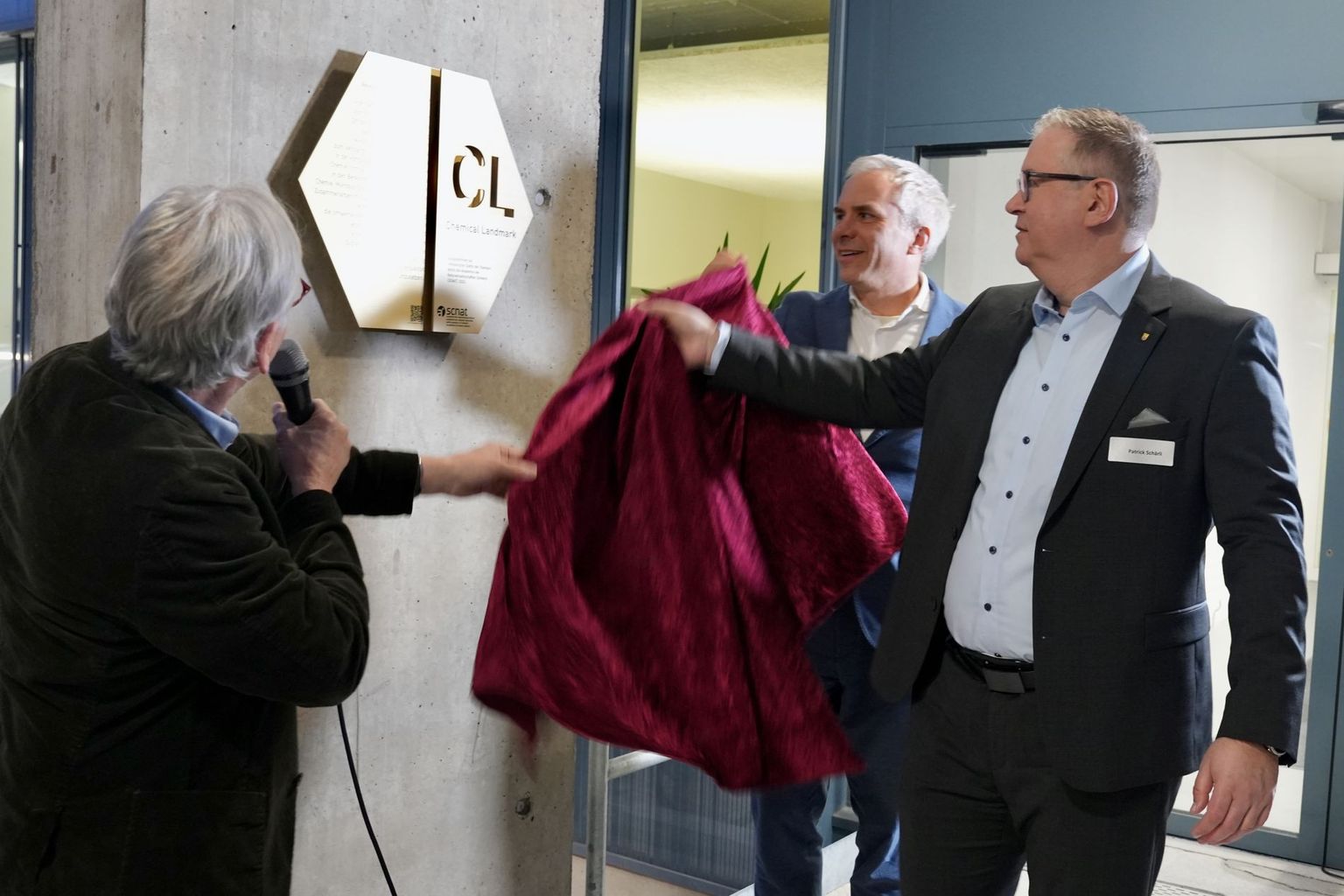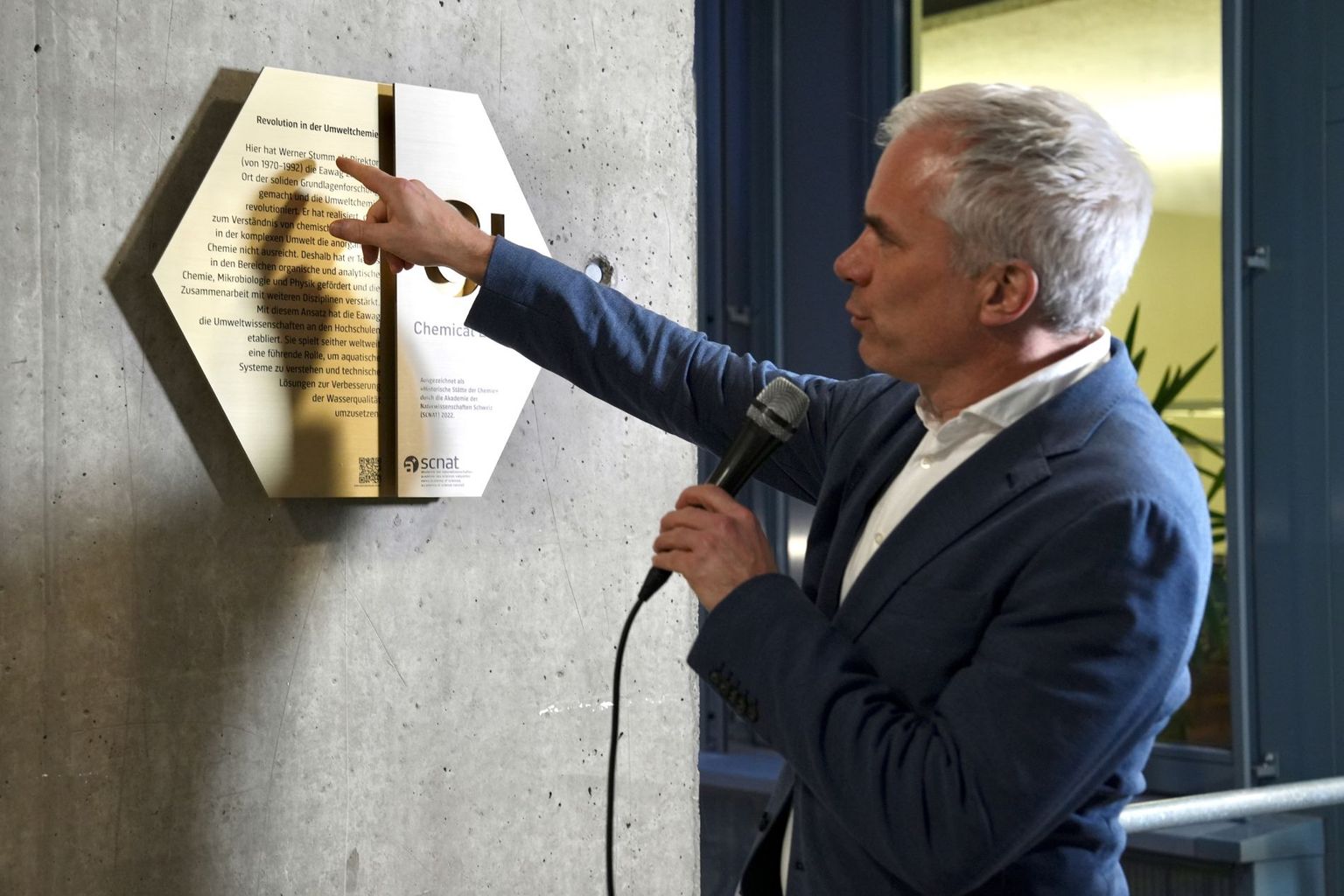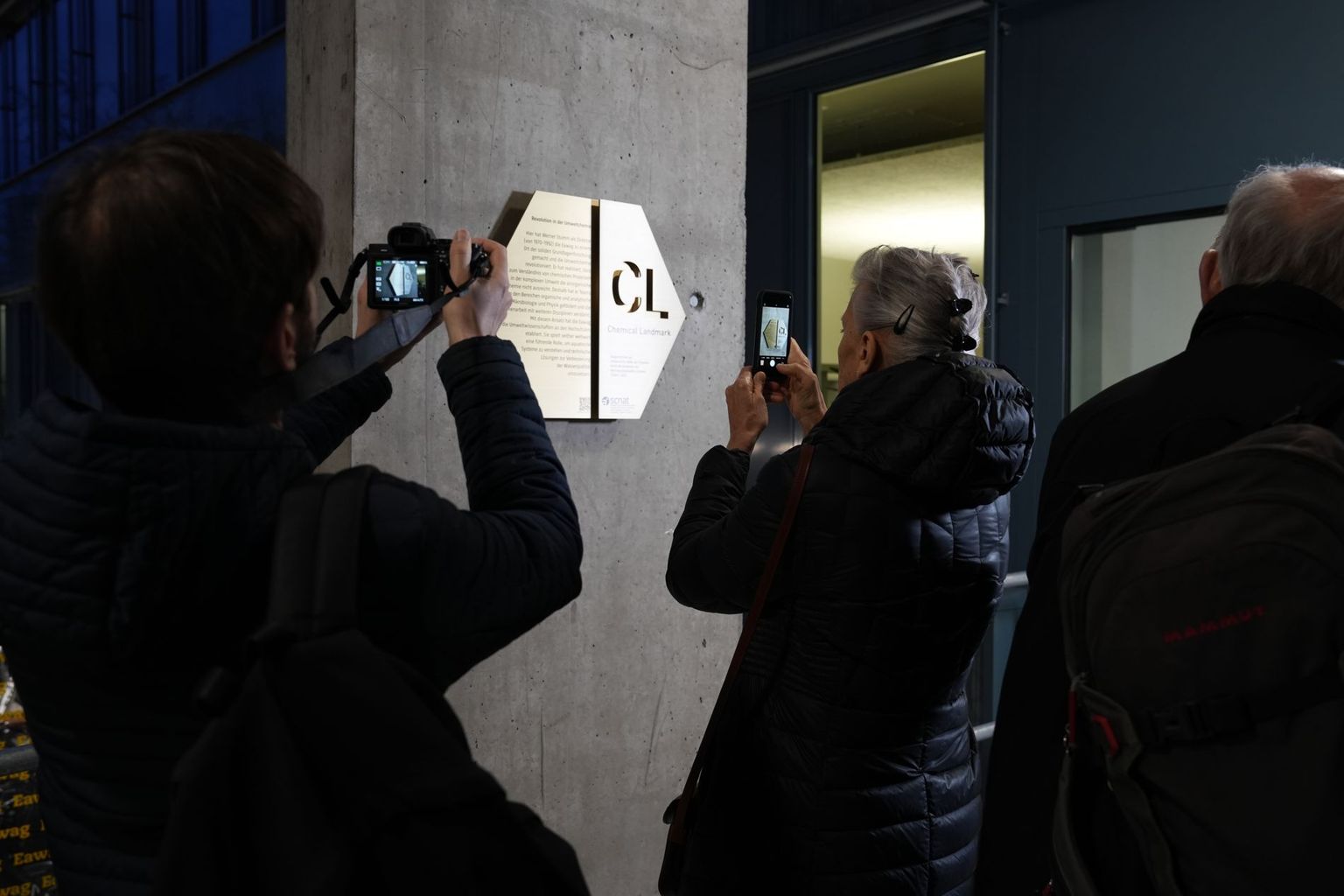Eawag has been singled out for the Chemical Landmark distinction
The Swiss Academy of Sciences has honoured the water research institute in Dübendorf as a significant historic site for chemistry. Eawag, the Swiss Federal Institute of Aquatic Science and Technology, revolutionised chemistry under its director, Werner Stumm, through its launching of environmental chemistry. It has contributed significantly to a better understanding of complex processes in nature and to clean bodies of water in Switzerland.
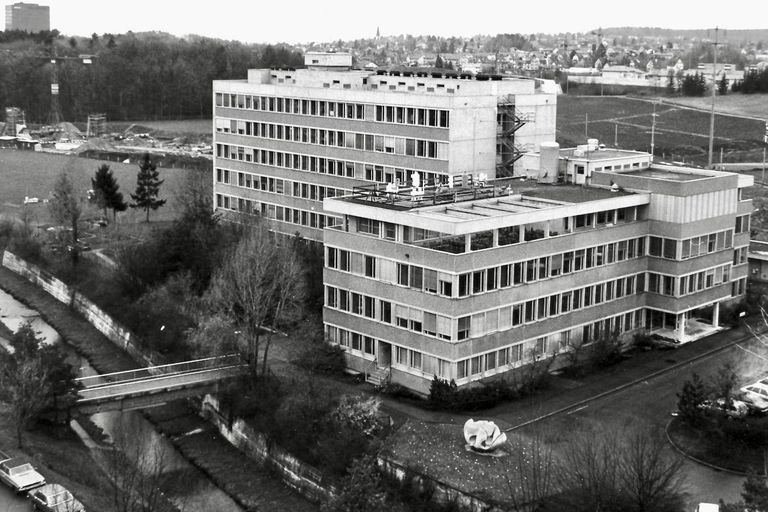
Überlandstrasse 133 in Dübendorf is the address where Eawag, the water research institute, made chemical history. And it was for this reason that it received the Chemical Landmark from the Swiss Academy of Sciences (SCNAT). This honour is awarded by SCNAT to domains in Switzerland which, through their actions, are historically significant in chemistry.
From test tube to natural environment
The fact that Switzerland can boast so many clean rivers and lakes today is due significantly to Eawag and, indeed, Werner Stumm, who headed the institute from 1970 to 1992. A chemist, he was of the opinion that environmental processes could only be understood if research was conducted into fundamental processes at a molecular level. He and his scientific colleagues therefore transferred laboratory research in the test tube to the complex material and impact cycles in nature. They identified the fact at an early stage that chemistry on its own was inadequate to research these, and that it was vital to also examine geological, biological, physical and ecological aspects. This was a pioneering approach from Eawag, examining as it did environmental phenomena and problems in a holistic manner which also transcended different disciplines. The new research field of environmental chemistry was born.
Werner Stumm was convinced that the pollution protection of bodies of water in Switzerland could not be solved solely through the construction of treatment plants. On the contrary, water protection is a permanent and ongoing task. New pollutants and new chemicals necessitated the development of novel and more sensitive analytical methods. Eawag also played a significant role in this area, and this has remained the case right up until the present. Whereas the focus used to be on phosphates from detergents and agriculture, attention today is directed towards, for example, pesticides, drugs and microplastics. Water is also a central concern when it comes to adapting to climate change.
Specialists for practical approaches
The water research institute in Dübendorf is today one of the leading global addresses when it comes to understanding aquatic systems and developing technical solutions to improve water quality. In addition to its consistent focus on solid basic research on an interdisciplinary level, Eawag under Werner Stumm also strengthened the appropriate education and training of specialists for practical work. It was one of the driving forces behind the introduction of the environmental sciences study programme at ETH Zurich.
Werner Stumm would have reached the age of 100 this year. Together with the distinction of becoming a historic site for chemistry, Eawag therefore has two reasons to celebrate. A combined ceremony today saw the accomplishments of the former director being honoured and the unveiling of the Chemical Landmark plaque. The city of Dübendorf is proud of the water research institute. "Research and education are our most important raw materials," said Patrick Schärli, president of the municipal council, in his address. "Our municipality is home to several renowned institutes. Eawag is one of the most prestigious of these."
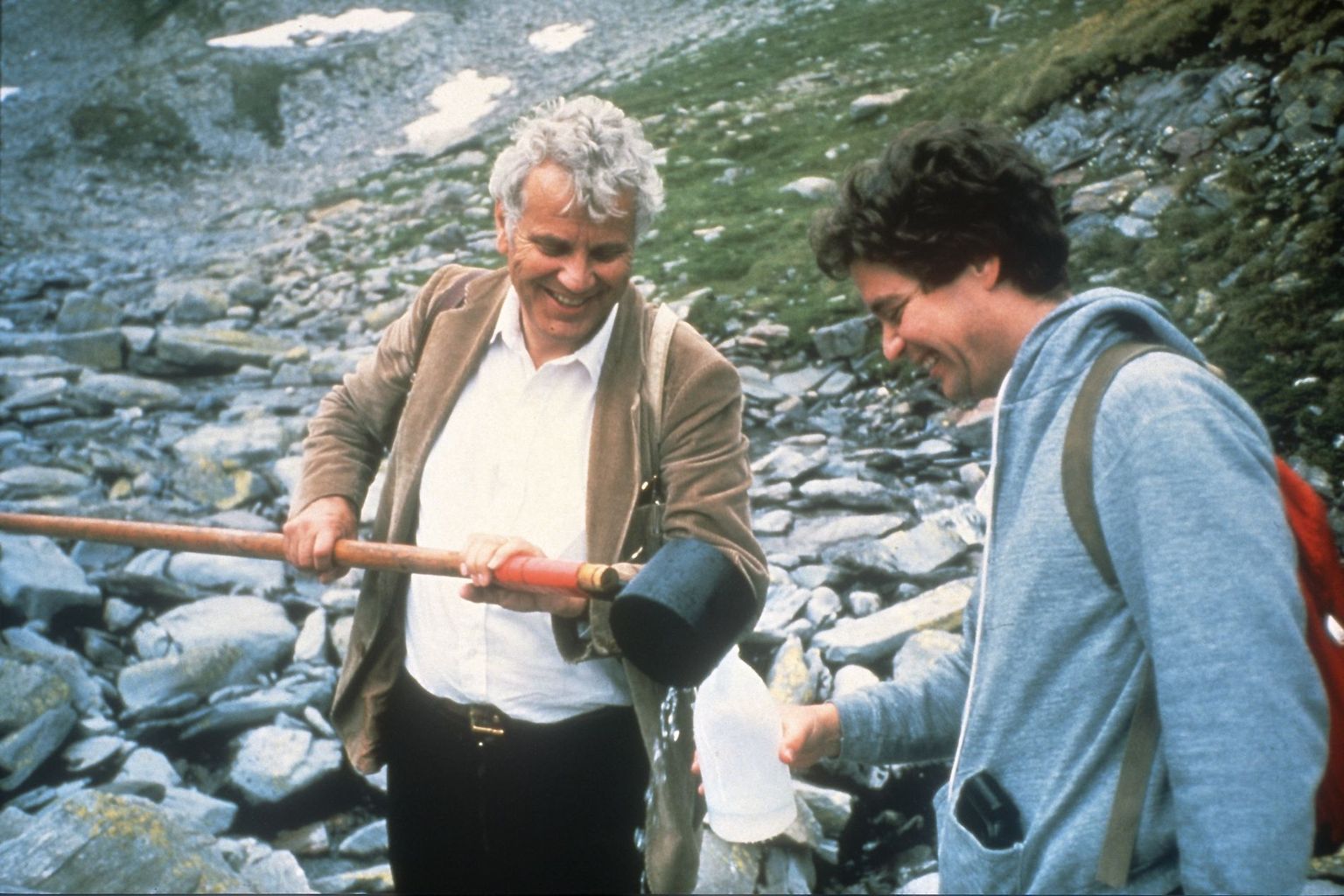
Contact
Dr. Leo Merz
SCNAT
Platform Chemistry
House of Academies
PO Box
3001 Bern
Switzerland


